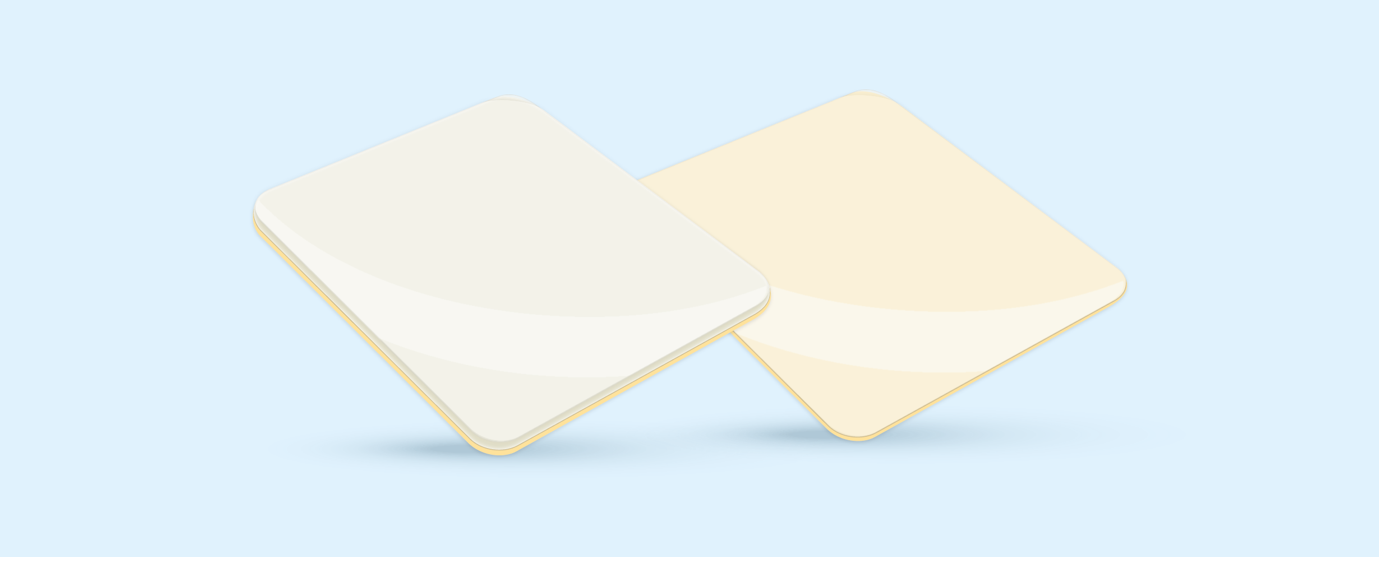Topic Four: Hydrocolloid Dressings

Composition & Properties
Hydrocolloids were developed initially for stoma products. Most hydrocolloids consist of a base made from pectin or gelatine, sodium carboxymethyl-cellulose (CMC) and elastomers, which are attached to a polyurethane film or foam backing. Some hydrocolloids do not contain gelatine (Williams, 1998).
Hydrocolloids are interactive dressings. In the presence of wound exudate, they absorb liquid and form a gel (Morris, 2006; Ousey, 2012) that holds the exudate within the hydrocolloid matrix (Benbow, 2005; Ousey, 2012).
Some hydrocolloids are occlusive, and others are semi-occlusive. Those that are semi-occlusive allow moisture vapour transfer (MVTR) as the exudate is absorbed and gel forms. The dressing becomes progressively more permeable, meaning that the MVTR is controlled in proportion to the amount of exudate present.
Consequently, these dressings can be used on a wider range of exudate levels ranging from low to moderate (Casey, 2000). They can be used to promote autolytic debridement of dry, sloughy or necrotic wounds (British National Formulary, 2011). Thinner versions are used on wounds that are dry or have low levels of exudate and are suitable for promoting granulation tissue (Fletcher et al., 2011).
Key modes of action:
- Provide an occlusive bacterial and viral barrier to reduce the risk of cross infection
- Lower the pH, reducing the ability of bacteria to proliferate
- Maintain moisture at the wound bed allowing for faster epithelialisation and lower levels of pain
- Prevent desiccation of the wound bed, providing a moist wound healing environment
(Queen, 2009)
Bathing or showering is possible without removing the dressing because of its waterproof properties (Benbow, 2005).
When not to use a hydrocolloid:
- Clinically infected wounds (unless used in conjunction with appropriate treatment such as systemic antibiotics)
- Occlusive hydrocolloids should not be used in the presence of anaerobic bacterial infection
- Full-thickness burns
- Exposed bone or tendon
- Ulcers resulting from tuberculosis, syphilis or fungal infection
- Active vasculitis
- Deep narrow sinuses
- Where there is a possibility of the wound becoming necrotic due to poor vascularisation
(Ousey et al., 2012)
Some things you may not be aware of about hydrocolloids:
- Some hydrocolloid dressings contain gelatine
- Hydrocolloids are occlusive and waterproof and may help reduce infection and cross infection
- Hydrocolloid dressings can be used for Stage/Category I and II pressure ulcers
- They are easy to remove and may reduce pain on dressing change
- Can maintain a moist healing environment without over hydrating the wound bed
- They can protect the periwound area as they overlap the wound bed
- They can facilitate autolytic debridement
- Hydrocolloids may help to reduce costs as they can be left in situ for up to seven days, providing there is no excessive exudate or infection present. On average, they stay in place for 3-5 days.
- Hydrocolloids do not require a secondary dressing
- The shiny outer surface and tapered edges of some newer hydrocolloid dressings help to protect tissues from pressure related damage by reducing the effects of pressure, shear and friction, reducing the likelihood of rucking, wrinkling or edge rolling.
(Fletcher et al., 2001, adapted from Ousey, 2012)
Indications for use
Hydrocolloids are indicated for use on low to moderately exuding wounds. They also encourage autolytic debridement and, therefore, may be useful for treating sloughy wounds or wounds with areas of necrotic tissue (Benbow, 2005).
Hydrocolloids can also be used on granulating wounds (Morris, 2006) and are often used as a primary dressing for minor burns and pressure ulcers. They can also be used as a secondary dressing to prevent other dressings on the wound from becoming contaminated (Ousey et al., 2012).
Hydrocolloid dressings are not recommended for wounds that are wet (moderate to heavy exudate).